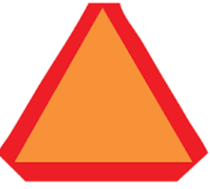ICBC Driving Practice Test
The following ICBC Driving Practice test has 50 questions in total. All the questions are set to prepare you for the real ICBC Permit Test of learner’s (Class 7L) licence. This practice test is about British Columbia Road Rules.
All the questions are set to help you learn about British Columbia permit test and efficiently prepare for the actual ICBC Permit Exam because in order to get the Class 7 license, passing this exam is mandatory.
To pass this test, you must answer 40 questions correctly out of 50 . Keep practicing until and unless you are confident enough to write the actual ICBC Permit Test and 100% correct with your answer to our practice tests. Good Luck!!!
Choose the right answer of ICBC Driving Practice Test – 7 by clicking one of the four:
#1. Scanning the road ahead helps drivers to_____.
#2. You should drive in third gear if you are driving at speeds between_____.
#3. If a driver gets 17 demerit points, he/she would need to pay a penalty of____.
#4. It’s your responsibility as the driver to make sure that all your passengers are properly secured with seatbelts or child-restraint systems.
#5. Which of the following statements about seatbelts is TRUE?
#6. You should use your mirror to check____.
#7. Which of the following are two strategies for handling emergency driving situations?
#8. When exiting a parking spot in heavy snow, which way should you turn your wheels?
#9. If you pull just slightly into another lane to pass a cyclist,_____.
#10. Which of the following is not prohibited to____.
#11. What are good things to do when backing up?
#12. Vehicles may not drive on the shoulder of a public highway____.
#13. You should not use cruise control____.
#14. When travelling at the legal speed limit you see a vehicle comes up quickly behind you flashing its headlights, you should_____.
#15. If you picture the steering wheel as a clock, where should you NOT place your hands?
*Imagine that your steering wheel is a clock. Put your hands at an equal height at the 9 o’clock and 3 o’clock position, or the 10 o’clock and 2 o’clock position, whichever is most comfortable. If there is an airbag in the steering wheel, the 9 o’clock and 3 o’clock or even an 8 o’clock and 4 o’clock position may be better than 10 o’clock and 2 o’clock. This is because your hands could hit your face if the airbag goes off when they are in the 10 o’clock and 2 o’clock positions.

#16. What does this sign mean?
#17. What is the ideal hand position on the steering wheel?
#18. Which one of the following is not a poor road condition for driving?
#19. Which of the following should be used instead of head lights in very foggy conditions?
#20. Why must you use signals when turning?
#21. The best way to stop quickly on a wet or icy roadway is to____.
#22. How can you test the low pressure warning signal?
#23. How far away must headlights and rear lights be seen?
#24. In the Class 7 learners licence category, the learner needs to pass:
#25. Why is it a bad idea to turn your steering wheel to the left while waiting to make a left turn at an intersection?
#26. What style of driving causes increased risk to everyone?
#27. It is illegal to drive____.
#28. If you see an emergency vehicle approaching with its siren and flashing lights on, you should_____.
#29. When should you enter roundabouts?
#30. To keep yourself attentive while driving, you should____.
#31. It is illegal to park_____.
*It’s illegal to park:
- on a sidewalk or boulevard
- across the entrance to any driveway, back lane or intersection
- within five metres of a fire hydrant (measured from the point
at the curb beside the hydrant) - within six metres of a crosswalk or intersection
- within six metres of a stop sign or traffic light
- within 15 metres of the nearest rail of a railway crossing
- in a bicycle lane
- on a bridge or in a highway tunnel
- where your vehicle obstructs the visibility of a traffic sign
- where a traffic sign prohibits parking, or where the curb is
painted yellow or red - in a space for people with disabilities unless you display a
disabled person parking permit in your windshield and your
vehicle is carrying a person with a disability.


